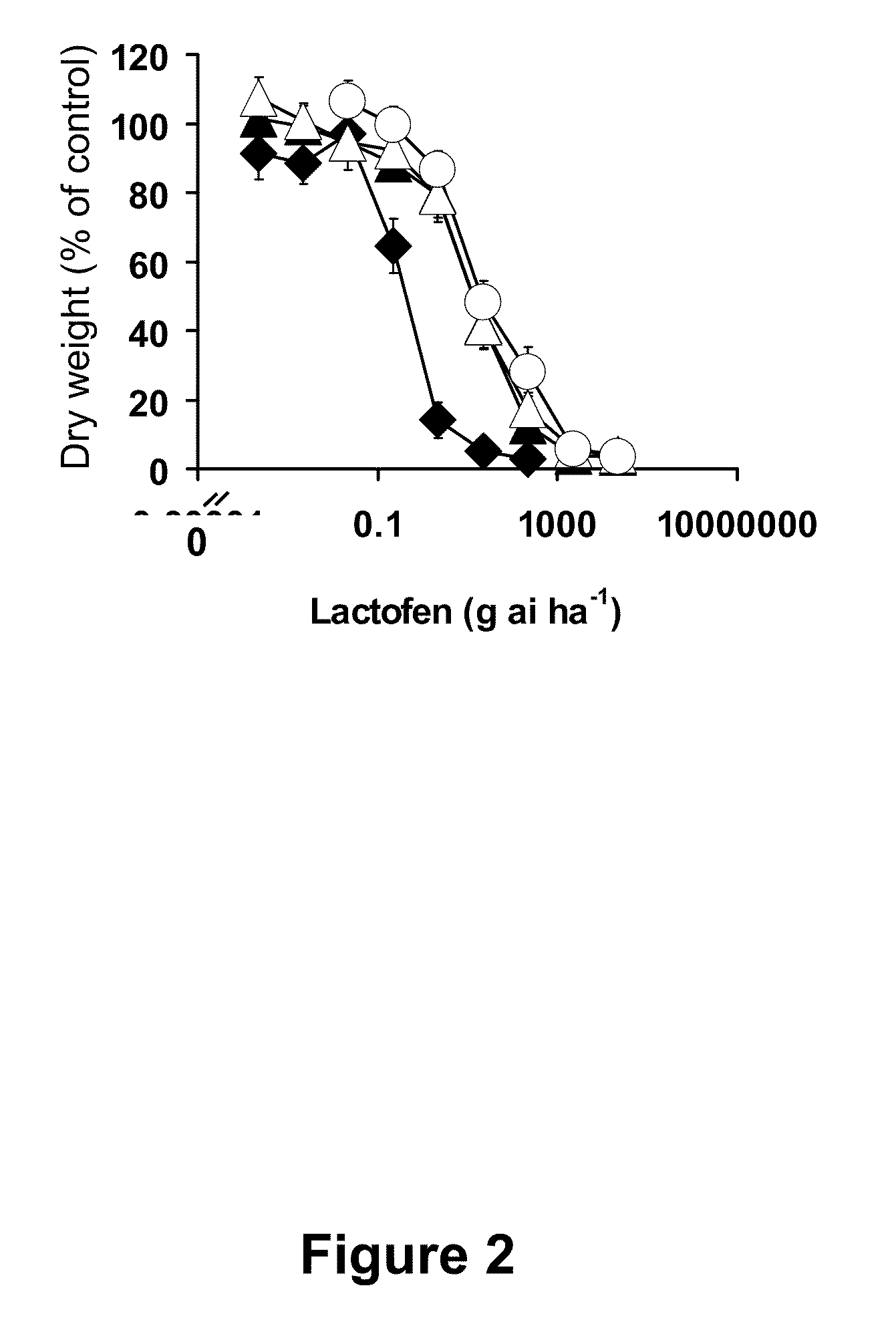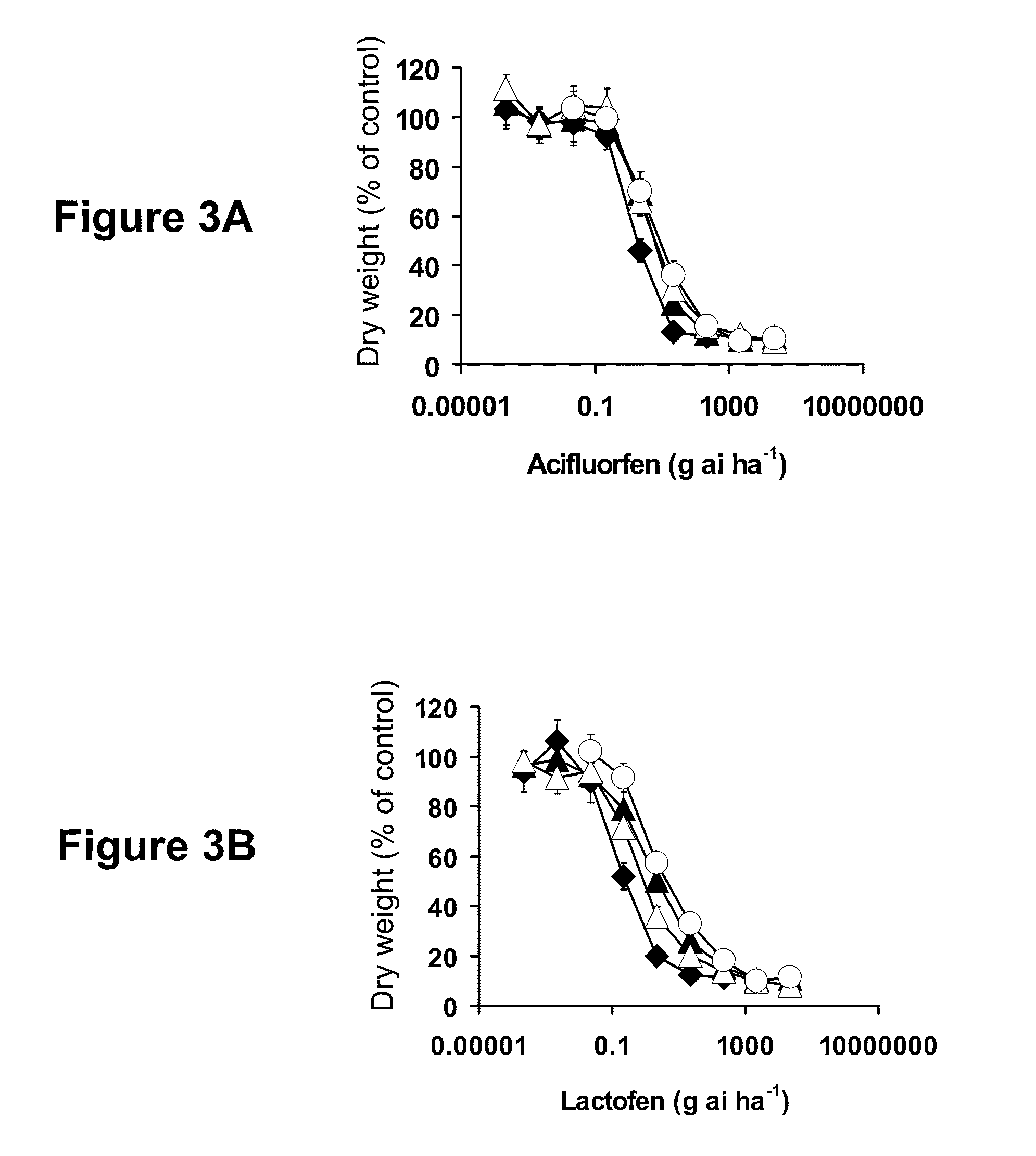Herbicide resistance gene, compositions and methods
a technology of herbicide resistance and composition, applied in the field of plant molecular biology, can solve the problems of rapid cell death, large and costly weed control problems for farmers, and accumulation of protoporphyrinogen ix in chloroplasts and mitochondria, and achieve efficient and economical weed control, less competition, and great efficiency
- Summary
- Abstract
- Description
- Claims
- Application Information
AI Technical Summary
Benefits of technology
Problems solved by technology
Method used
Image
Examples
example 1
A. tuberculatus Biotypes
[0199]The R biotype used in this study was derived from an A. tuberculatus (waterhemp) population originally collected in Adams County, Illinois, and confirmed resistant to PPO-, ALS-, and photosystem II-inhibiting herbicides (Patzoldt, 2005). The S biotype was collected in Wayne County, Illinois, and was identified in previous experiments to be susceptible to all herbicides tested (Patzoldt, 2002). A. tuberculatus plants derived from the original Adams County population that were PPO inhibitor-susceptible (S-BioAC), and those from a PPO inhibitor-resistant biotype collected in Clinton County, Illinois (R-BioCC), were utilized for sequencing of PPX2L alleles only.
example 2
Plant Culture
[0200]A. tuberculatus seeds for each experiment were sown in flats (surface area of 930 cm2) containing a 1:1:1 mixture of soil:peat:sand. Seedlings for each experiment were transplanted when needed into 12-cm square pots containing 800 ml of soil plus 0.2% (by vol) 14-14-14 Nutricote (Agrivert Inc., Glenpool, Okla.) when they were approximately 1-cm in height. Plants were grown in a greenhouse maintained at 28 / 22° C. day / night with supplemental light (minimum of 800 μmol m−2 s−1 photon flux at the plant canopy) provided by mercury halide and sodium vapor lamps programmed for a 16-hour photoperiod.
example 3
Herbicide Applications
[0201]Herbicide treatments were applied using a compressed air, moving nozzle laboratory sprayer equipped with an 80° flat fan nozzle (Teejet, Spraying Systems Co, Wheaton, Ill.) delivering 187 L ha−1 of water at 207 kPa. The nozzle was maintained approximately 45 cm above the plant canopy. Plants were returned to the greenhouse immediately after herbicide treatment. All foliar-applied herbicide treatments were made when A. tuberculatus plants were 10-12 cm in height.
PUM
| Property | Measurement | Unit |
|---|---|---|
| pH | aaaaa | aaaaa |
| length | aaaaa | aaaaa |
| temperature | aaaaa | aaaaa |
Abstract
Description
Claims
Application Information
 Login to View More
Login to View More - R&D
- Intellectual Property
- Life Sciences
- Materials
- Tech Scout
- Unparalleled Data Quality
- Higher Quality Content
- 60% Fewer Hallucinations
Browse by: Latest US Patents, China's latest patents, Technical Efficacy Thesaurus, Application Domain, Technology Topic, Popular Technical Reports.
© 2025 PatSnap. All rights reserved.Legal|Privacy policy|Modern Slavery Act Transparency Statement|Sitemap|About US| Contact US: help@patsnap.com



